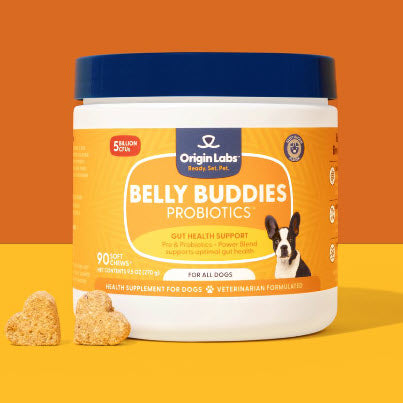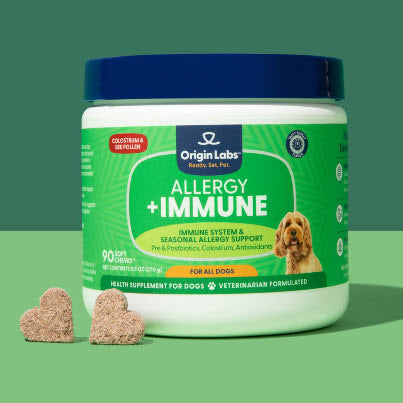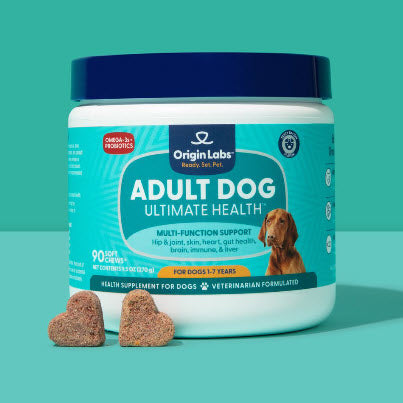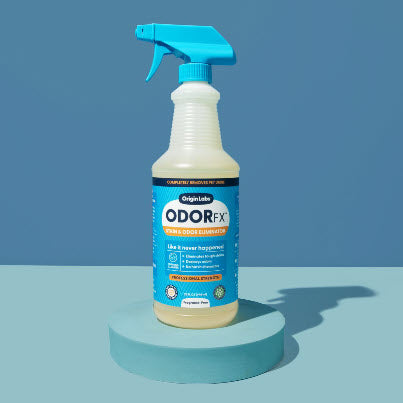Introduction
Chickpeas, also known as garbanzo beans, have emerged in recent years as a favored food item among health-conscious individuals. These nutrient-dense legumes are rich in protein, brimming with dietary fiber, and teem with essential vitamins and minerals. But the burning question persists: Can dogs eat chickpeas?
Given the trend of sharing our nutritious food habits with our pets, it's critical to investigate the possible impacts of these dietary choices on our canine companions. This discourse seeks to unravel the answer to whether dogs can safely consume chickpeas.
We'll explore various aspects, including the nutritional benefits of chickpeas for dogs, potential risks involved, and guidelines for integrating this legume into your pet's diet.
Remember that each dog is unique - their breed, size, age, and overall health can influence how they react to different foods. Consequently, it's always advisable to consult your veterinarian before introducing new items into your dog's diet.
Now, let's delve deeper to ascertain if chickpeas can be a beneficial addition to your dog's meals!
The Nutritional Value of Chickpeas for Dogs
Chickpeas, also known as garbanzo beans, are a nutritious powerhouse not only for humans but potentially for dogs as well. Packed with a variety of essential nutrients, these legumes can offer several health benefits when included in a dog's diet properly. Below is an in-depth look at the nutritional components of chickpeas and their potential advantages for canine health.
1. High Protein Content
Protein is crucial for dogs as it supports muscle development and repair. Chickpeas are an excellent source of this macronutrient, making them beneficial especially for active dogs or those with higher protein requirements due to growth or recovery from illness.
2. Rich in Dietary Fiber
Fiber is important for maintaining good digestive health in dogs. Chickpeas are rich in fiber, which offers the following benefits:
- Supporting Digestive Health: Fiber helps regulate bowel movements and can aid in preventing constipation.
- Weight Management: The fiber content in chickpeas also contributes to a feeling of fullness, which can help prevent overeating and assist overweight dogs on their journey back to a healthy weight.
3. Essential Minerals
Chickpeas contain several minerals that play vital roles in a dog's body:
- Iron: Essential for the production of hemoglobin, iron from chickpeas helps ensure that oxygen is efficiently transported throughout your dog's body.
- Magnesium: This mineral is involved in hundreds of biochemical reactions in the body, including energy creation and muscle movements.
- Selenium: Selenium acts as an antioxidant, protecting cells from damage and supporting immune function.
4. Vitamin B Boost
Vitamin B complex in chickpeas aids in various functions within a dog's body:
- Energy Production: B vitamins help convert food into energy, ensuring that your dog has the vitality needed for daily activities.
- Nervous System Function: B vitamins also play a crucial role in maintaining a healthy nervous system, which is important for your dog’s overall well-being.
The inclusion of chickpeas in a dog's diet may provide these nutritional benefits. However, it is essential to introduce any new food gradually and to monitor for any adverse reactions as each dog’s digestive system can react differently. By understanding the nutrient profile of chickpeas, owners can make informed decisions about incorporating this wholesome legume into their pet's meals.
Can Dogs Safely Consume Chickpeas?
When it comes to whether dogs can eat chickpeas, it's important to understand the differences between fresh and canned varieties and how they affect our furry friends.
Fresh vs. Canned Chickpeas for Dogs
Choosing between fresh and canned chickpeas isn't just about convenience, but also about what's best for your dog's health. Here's a breakdown of both options:
Fresh Chickpeas
- Natural State: Fresh chickpeas are closer to their natural form and usually don't contain added salt or preservatives.
- Preparation Required: They need to be cooked before eating, as raw beans can be tough for dogs to digest.
- Nutrient Preservation: Cooking fresh chickpeas can help retain more nutrients compared to certain canned varieties that may lose nutritional value during the canning process.
Canned Chickpeas
- Convenience: Canned chickpeas are convenient because they're pre-cooked and ready to eat after rinsing.
- Added Sodium: Many canned options have high levels of sodium, which can be harmful to dogs in excess.
- Choosing the Right Kind: Opting for low-sodium or no-salt-added canned chickpeas is a better choice. Always check the label for any other ingredients that could be dangerous to dogs.
Both fresh and canned chickpeas have their advantages. Fresh ones are more natural, while canned ones are easier to use. However, it's important to be cautious when selecting canned chickpeas to make sure they're safe for your pet.
Why You Should Rinse Canned Chickpeas to Reduce Salt Content
Too much salt can lead to salt poisoning in dogs, which can cause symptoms like vomiting, diarrhea, lethargy, and even seizures in severe cases. To lower this risk:
- Rinse Thoroughly: Always rinse canned chickpeas with cold water to remove as much salt as possible before giving them to your dog.
- Drain Well: Make sure the chickpeas are fully drained after rinsing to prevent any leftover sodium from being consumed by your dog.
- Watch the Portion Size: Even with rinsed chickpeas, it's crucial to serve them in moderation as part of a balanced diet.
Potential Risks and Precautions When Feeding Chickpeas to Dogs
While chickpeas can be a healthy addition to a dog's diet, there are potential risks and precautions to keep in mind:
1. Digestive Issues
Some dogs may have gas or digestive discomfort because of the high fiber content in chickpeas. To avoid this:
- Introduce chickpeas slowly into your dog's meals to give their digestive system time to adjust.
2. Allergic Reactions
Although it's rare, some dogs might be allergic to chickpeas. If you notice any negative reactions such as itching or upset stomach after feeding them chickpeas for the first time, consult with a veterinarian.
3. Preparation Method
- Avoid seasoning or adding any ingredients that could be toxic to dogs (e.g., garlic or onions).
- Cook the chickpeas thoroughly; don't feed them raw beans as they contain lecithin which can interfere with nutrient absorption.
By being mindful of these factors and taking proper precautions, dog owners can safely introduce chickpeas into their pet's diet. Always keep an eye out for any changes in your dog's behavior or digestion when introducing new foods.
Feeding dogs with careful consideration for their food choices ensures they get the most out of their meals while minimizing potential health issues. With this knowledge, pet owners can make informed decisions about incorporating this versatile legume into their dog's diet.
Potential Risks and Precautions Associated with Feeding Chickpeas to Dogs
Understanding the Safety Aspect of Feeding Chickpeas to Dogs
While chickpeas can be a nutritious addition to a dog’s diet, it is critical to be aware of potential risks and appropriate serving sizes. Just as with any dietary change for your pet, there are several factors to consider when introducing chickpeas:
- Digestive Sensitivities: Some dogs may experience gas or abdominal discomfort due to the high fiber content in chickpeas. Starting with small amounts and observing your dog's reaction can help minimize these issues.
- Allergic Reactions: Although uncommon, allergies to chickpeas can occur. Signs of an allergic reaction include itching, ear infections, or gastrointestinal problems. If you observe any of these symptoms, discontinue feeding and consult your veterinarian.
Moderation is Key: Recommended Amounts of Chickpeas for Canine Consumption
To maintain balance in your dog’s diet, moderation is crucial when incorporating chickpeas:
- Introduce chickpeas gradually into their diet in small quantities.
- Ensure that chickpeas do not exceed 10% of your dog's daily caloric intake.
Precautionary Measures for Safe Chickpea Consumption by Dogs
Adhering to these precautionary measures can safeguard your dog’s health while allowing them to enjoy the benefits of chickpeas:
- Proper Preparation: Always cook fresh chickpeas thoroughly as raw beans can be harmful. Avoid adding seasonings or salt which can be detrimental to dogs.
- Rinsing Canned Varieties: For canned chickpeas, rinsing under water helps remove excess sodium, minimizing the risk of salt toxicity.
- Monitor Portion Sizes: Keep portions small and appropriate for your dog's size and dietary needs.
- Consultation with a Vet: Prior to introducing any new food, seeking guidance from a veterinarian ensures compatibility with your dog's health status and dietary requirements.
By observing these guidelines, you can make informed decisions about feeding chickpeas to dogs, enhancing their diet while prioritizing their wellbeing.
Other Ways to Incorporate Chickpeas into a Dog's Diet
Chickpeas offer a range of nutritional benefits for dogs, but whole or cooked chickpeas aren't the only way to share these legumes with your canine friend. Pet owners have several options when considering how to include chickpeas in their dog's meals.
Chickpea-Based Dog Food
Many commercial dog foods now include chickpeas as a key ingredient. These products provide a convenient way to ensure dogs receive the benefits of this nutrient-rich food without the need for preparation.
- Grain-Free Options: Some grain-free dog foods use chickpeas as a carbohydrate source. This can be ideal for dogs with specific grain allergies or sensitivities.
- Protein-Rich Formulas: Chickpeas can contribute to the overall protein content of dog food, supporting muscle development and function.
While selecting chickpea-based dog food, it's crucial to review the ingredient list. Ensure that chickpeas are not just a filler but serve as a beneficial component of a well-balanced diet.
Raw Chickpeas
Raw chickpeas might seem like a natural choice, but they are not recommended for dogs. These legumes should always be cooked to improve digestibility and eliminate any potential toxins.
Hummus for Dogs
Hummus is often enjoyed by humans but typically contains ingredients that are not suitable for dogs, such as garlic and lemon juice, which can be harmful.
- Garlic: Even small amounts can be toxic to dogs.
- Lemon Juice: Citrus can cause stomach upset in some dogs.
For owners looking to give their dogs a hummus-like experience, consider preparing a simple blend of cooked chickpeas and peanut butter (ensure it's xylitol-free) or pureed pumpkin.
Potential Risks and Precautions
When exploring alternative forms of chickpea consumption:
- Avoid Seasonings: Many human foods and preparations contain seasonings that can be dangerous for dogs.
- Monitor Portions: Keep portions small to avoid digestive upset, especially when introducing new foods.
Through these varied approaches, pet owners can safely introduce chickpeas into their dog's diet while avoiding potential risks associated with certain preparations or additional ingredients. It is always best practice to consult with a veterinarian before making significant changes to your dog’s diet.
Guidelines for Adding Chickpeas to Your Dog's Meals
Chickpeas are packed with nutrients that can be great for your dog. But how do you safely and effectively introduce this superfood into their diet? Here are some guidelines to follow:
Safely Incorporating Chickpeas into Your Dog's Diet
- Introduce gradually: Start by adding a small amount of cooked chickpeas to their regular meal and see how they react. This helps their digestive system adjust to the new food without any issues.
- Cook before serving: Raw chickpeas can be harmful to dogs, so always make sure to cook them thoroughly before feeding.
- Watch for reactions: Keep an eye out for any signs of allergies or digestive upset when introducing chickpeas. If your dog shows any negative reactions, stop feeding them chickpeas and consult your vet.
Recommended Portion Sizes and Frequency
- Portion size: The right amount of chickpeas for your dog depends on factors like their size, age, and overall health. As a general guideline, chickpeas should make up no more than 10% of their daily food intake.
- Frequency: Start by giving your dog chickpeas as part of one meal per week. If they tolerate it well, you can gradually increase this to two meals per week.
Preparation Methods
- Keep it plain: Avoid adding any seasonings or spices to the chickpeas as these can be harmful to dogs. Plain boiled or steamed chickpeas are best.
- Be cautious with canned chickpeas: If you're using canned chickpeas, choose low-sodium options and rinse them thoroughly before cooking. Canned chickpeas often have added salt, which is not ideal for dogs.
Incorporating chickpeas into your dog's diet can provide them with added nutrients and variety. However, it's important to remember that chickpeas should not replace their regular balanced meals. Always consult with your vet before making any significant changes to your dog's diet.
In Conclusion
Dogs can indeed enjoy the health benefits of chickpeas as part of a balanced diet. Garbanzo beans, another name for chickpeas, offer valuable nutrients such as protein and fiber that support canine well-being. Before incorporating these legumes into your dog's meals:
- Assess their individual dietary needs.
- Consider the safety of feeding chickpeas to dogs; while they are generally safe, every dog is unique.
It's essential to remember that not all foods suitable for humans are appropriate for dogs. For instance, while chickpeas can be good for dogs, certain chickpea-based products like hummus should be avoided due to potential harmful ingredients.
To ensure the best outcomes when feeding garbanzo beans to dogs:
- Introduce them slowly.
- Observe how your dog reacts to this new addition.
Seeking professional guidance is always wise when changing your pet's diet. A veterinarian can provide personalized advice tailored to your dog’s specific health requirements, answering questions like "Are chickpeas healthy for dogs in my particular case?" or "How often can my dog eat chickpea-based meals?"
Remember, moderation is key, and with the right approach, chickpeas can be a safe and nutritious treat for dogs, enhancing their diet with nature's goodness.
FAQs (Frequently Asked Questions)
Can Dogs Safely Consume Chickpeas?
Yes, dogs can safely consume chickpeas. However, this should be done with a few considerations in mind. Chickpeas, also known as garbanzo beans, are a rich source of essential nutrients that can contribute to your dog's overall health when added to their diet appropriately.
What is the Nutritional Value of Chickpeas for Dogs?
Chickpeas have a commendable nutritional composition which can benefit dogs' health in various ways:
- High Protein Content: Chickpeas are an excellent source of plant-based protein. This nutrient plays a vital role in muscle building and tissue repair.
- Rich Dietary Fiber: The fiber content in chickpeas helps promote healthy digestion and bowel movements.
- Essential Minerals: Chickpeas are packed with essential minerals such as iron, magnesium, and potassium which support multiple body functions.
- Vitamin B Boost: They contain vitamins like folate (B9) which is beneficial for cellular function and energy production.
Are Fresh or Canned Chickpeas Preferable for Dogs?
Both fresh and canned chickpeas can be fed to dogs, but there are some differences to note:
- Fresh Chickpeas: These are the best option as they maintain all their natural nutrients without any additives.
- Canned Chickpeas: A convenient alternative, but ensure they're free from added salt or preservatives. Always rinse canned chickpeas thoroughly before feeding them to your dog to reduce any residual sodium content.
What are the Potential Risks and Precautions Associated with Feeding Chickpeas to Dogs?
While chickpeas are generally safe for dogs, some precautions should be taken:
- Moderation is key: Overfeeding chickpeas can lead to gastrointestinal disturbances such as gas or bloating.
- Preparation matters: Never feed your dog raw chickpeas as they can be difficult for them to digest. Always cook chickpeas before offering them to your pet.
- Avoid certain chickpea products: Some products like hummus, contain ingredients like garlic and onions that are toxic to dogs.
How Can Chickpeas be Incorporated into a Dog's Diet?
Chickpeas can be incorporated into a dog's diet in various ways:
- Whole or Cooked: Serve cooked chickpeas mixed with their regular food.
- Commercial Dog Food: Some commercial dog foods use chickpeas as a primary ingredient. Always check the product label for added ingredients and ensure it's appropriate for your dog's dietary needs.
What are the Guidelines for Adding Chickpeas to Your Dog's Meals?
Here are some guidelines when introducing chickpeas to your dog's diet:
- Portion Sizes: Start with small portions to see how your dog reacts to this new addition.
- Preparation Methods: Cook the chickpeas thoroughly and ensure they're cool before feeding them to your pet.
- Frequency of Feeding: Initially, feed chickpeas to your dog once or twice a week and observe their reaction. If well tolerated, you may gradually increase the frequency.








